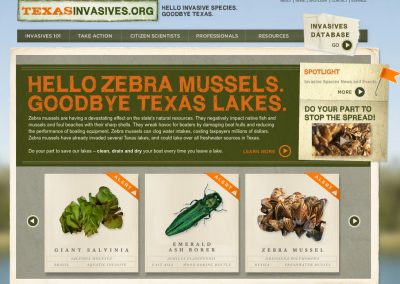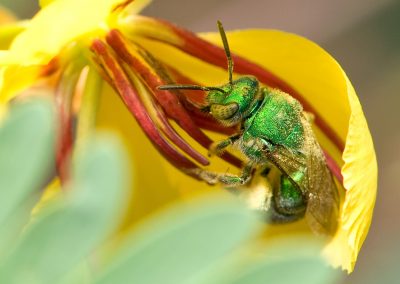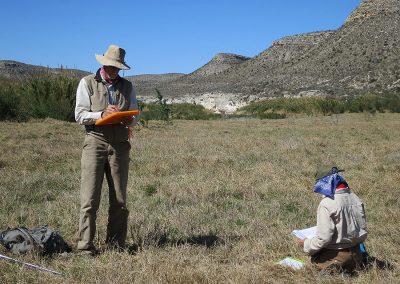Ash Conservation
The emerald ash borer is spreading like wildfire across North America, leaving millions of dead ash trees in its wake throughout the Northeast and Midwest. In some of the places where EAB has taken hold, 99 percent of ash trees have died. This invasive insect (a species from Asia that was introduced to the United States via wood packing material in the 1990s) is set to change our forests and landscapes forever. And it’s gotten close to home.
As of May 2016, Texas A&M Forest Service confirmed the sighting of EAB in Texas (in Harrison County), and reports of EAB in Tarrant County were confirmed in late 2018. Wildflower Center conservationists are leading efforts to collect seeds from native Texas ash trees (Fraxinus spp.) to safeguard them from devastation and aid in future ash restoration projects.
Texas has eight native ash species, all of which are vulnerable to the emerald ash borer. They are also all important components of Texas ecosystems: At least 43 native insect species rely on ash trees for food or breeding, and those insects in turn provide food for birds. Ash trees also protect riparian habitats from soil erosion and increased water temperature through shading and serve urban habitats by providing shade, habitat, water filtration and more.
With the help of almost 200 citizen scientist volunteers, the Center’s Ash Conservation project saved 125,000 seeds primarily from one species of ash tree (Fraxinus albicans) in counties within the Edwards Plateau and Cross Timbers ecoregions of Texas. Despite this great effort, there is still much work to be done.
How You Can Help
- Don’t move firewood. Buy it where you burn it. Learn more here.
- Report Emerald Ash Borer. If you suspect EAB activity, take a picture of the symptomatic plant or pest, record its GPS location and submit the observation to Texas Invasives.
- Map ash trees in Texas. If you have ash trees in your area, you can help seed collection efforts by sending GPS coordinates, what species you think it is and photos (one closeup of the leaf and one of the entire tree) to our project contact.
- Collect ash seeds. Ash seeds are being collected for long term storage to preserve genetic resources of the ash species. If you would like more information about participating in this aspect of the project, please email us.
- Support our ash conservation efforts. Time is of the essence. Donate today.
DIG DEEPER
Ash Seed Conservation Project Fact Sheet
What Native Ash Trees Grow in My Texas County?
Networking and Protecting Ash Trees
Video: Austin Eagle Scouts Help Collect Ash Seeds
LOCATION
Based at the Wildflower Center
PROJECT DATES
- Ongoing
PARTNERS
- U.S. Department of Agriculture
- U.S. Forest Service
- Texas Invasive Species Institute
- Texas Invasives
- Emerald Ash Borer Information Network



